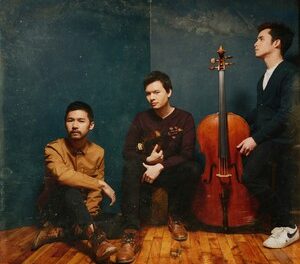The line snaking around the path leading to Duke Chapel bears witness to the resurgence in popularity of early music. While the NC Symphony and chamber music audiences still tend to the gray of head, the joint performance by Anonymous 4 and Lionheart certainly illustrates how Hildegard von Bingen could reach the top 40 among younger concert goers.
By combining forces with Lionheart, Anonymous 4 greatly expands its repertory, especially in secular music. The call for mixed voices-that is men and women-in the chansons and madrigals of the Renaissance makes such a collaboration a necessity. Fortunately, both ensembles share the same philosophy on vocal production and style so that they blended seamlessly. The works on this program were for various vocal combinations, and the singers arranged themselves physically in order to achieve the optimal sound.
The program was a snapshot of a slice of life for the Italian Renaissance intelligentsia of the 16th century. The humanist movement was in full force, and the translation, analysis and imitation of ancient Classical texts was a consuming passion. For composers this meant a new preoccupation with creating music that expressed the text, often word by word. This concern for an aesthetic blend between music and poetry eventually resulted in a full-fledged musical rhetoric in the hands of such early Baroque masters and innovators as Claudio Monteverdi and the Florentine Camerata-the “inventors” of opera. Some of the secular music of this neo-classical ideal departs from the intricate imitative counterpoint of the period. Designed to enhance the text, it is simpler and more declamatory (one or two syllables per note) with a predominantly homophonic texture.
Entitled “God and Mortals, Renaissance Masters on Classical Themes,” the evening’s program was an erudite collection of two types of Italian madrigals of the 16th century: one group based on musical settings of passages from the Aeneid , the other languorous love lyrics of the Arcadian nymphs and shepherds who populated the Golden Age. The program alternated between sets of “Arcadian” and Virgilian settings. The passages from the Aeneid all came from the end of Book IV, which tells the tragic story of Queen Dido of Carthage, manipulated by the hand of the goddess Juno, a partisan of the Greeks, to lure the Trojan hero Aeneas away from his goal of founding Rome. Not surprisingly, the most popular source for these musical settings are the final passages in Book IV, in which Dido, realizing that she’s just another girl in one of Aeneas’s ports, plans her fiery suicide. The ensemble presented these settings in the order of the poem so that they told in rudimentary form the story of the death of Dido.
The program included madrigals by the cream of the crop: the Italians, Andrea Gabrieli, Claudio Monteverdi, Luca Marenzio, Salamone Rossi, Orazio Vecchi and Carlo Gesualdo-plus a virtually unknown, Antonio Caprioli; and the Flemish composers who graced courts all over Europe, Orlandus Lassus, Jakob Arcadelt, Cipriano de Rore and Adrian Willaert. The music ranged from simple diatonic homophony in the two settings from the Aeneid by Caprioli, “At regina dolos” (But the queen saw through his lie) and “Ergo Iris croceis” (So Iris on dewy wings) to the torturous chromaticism of Gesualdo and Cipriano. The program notes to Cipriano’s “Calami sonum” (The pipes carrying the sound) suggest that this lament from the Aeneid may have been written to illustrate the extremes of chromaticism. Gesualdo’s “Io parto,” (I am leaving) an anguished Arcadian love lyric, showed the group at its best where just staying in tune is an act of virtuosity. Gesualdo frequently chose tragic texts so that he could create clashing dissonances to accompany words such as “pain,” “dying,” “weeping.” Although this technique had been around for about 100 years, no one had yet exploited it to this degree.
Other adaptations of music to text were the setting of dialogue in which the ensemble is divided so that each half “portrays” one of the speakers. Andrea Gabrieli, in “Tirsi morir volea” (Tirsi wanted to die), utilized the same technique that he and his nephew, Giovanni, made famous with the antiphonal choruses for St. Mark’s cathedral in Venice.
While the program was well designed to illustrate the neoclassical enthusiasm of the Renaissance, there seemed to be little obvious contrast between the individual works. Following along with the texts, however, revealed the subtlety of the musical reflections of the poetry. The opening set, the only emotionally upbeat works on the program, gave way to the somber tone of unrequited love so pervasive that the single encore, “Caccia d’amore” by Giovanni Gastoldi-a rollicking “fa-la-la” piece-had the audience snickering in amusement.











